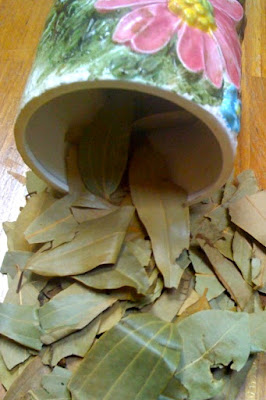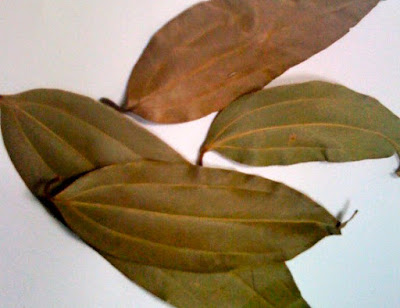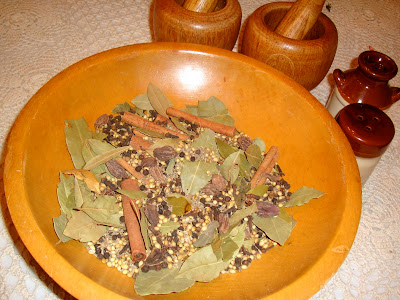Bay Leaves (cassia) Spice - Tejpaat, Tej-patta- (तेजपत्ता) Garam Masala
Picked From the aromatic evergreen tree, this herb is also known as Indian cassia, cinnamon leaves and tej patta. The dried leaves are oblong shaped and usually have three prominent veins. The dried Bay leaves have a warm, sweet, and distinct cinnamon aroma.
They are usually lightly sauteed for all kinds of spiced meat and fish curries, savory rice dishes, lentils, and some vegetables and are usually removed from the dish before it is served.
 |
| The highly scented dried cassia leaves becomes dull brown when dried. Bay leaves are tough to grind, so commonly used whole, instead of ground form. Bay leaves can be used fresh, but the dried ones are most common. |
And How to Cook With and Store Them
A herb may be a fragrant leaf from a laurel tree that's used as an herb. Bay leaves are often used fresh or dried; dried bay leaves tend to possess a rather stronger flavor.
Identifying the herb
Fresh bay leaves are shiny dark green on their tops with a duller, lighter green underside. When they're dried, they appear just about an equivalent on each side . Bay leaves come from the true laurel plant. true laurel is an evergreen shrub or plant that grows slowly and in warm climates. The true laurel plants are often grown for ornamental uses, and therefore the leaves can then be dried and utilized in cooking.
Cooking With Bay Leaves
Bay leaves are often utilized in many sorts of cuisines. most frequently , recipes involve dried bay leaves. While the flavour results of fresh vs. dried bay leaves aren't that different, fresh bay leaves are often far more expensive and don't last as long as dried bay leaves.
Bay leaves aren't generally eaten but are rather simmered during a sauce or included during a braising liquid, then removed before serving. A herb is usually ground into a powder and used almost sort of a spice.
In addition to simmering them in soups and stews, bay leaves are great for stuffing into the cavity of a chicken before roasting it, and that they are often added to the liquid for cooking rice.
Bay Leaf Safety
There's a misconception that bay leaves are poisonous. However, the bay leaves used for culinary purposes aren't poisonous. There do happen to be a few of species of herb that are poisonous, specifically the cherry laurel and mountain laurel, but these varieties aren't sold as herbs.
Bay leaves are removed before serving because the leaves have sharp points and may stab you within the mouth if you bite down on them the incorrect way.
Storing and Buying Bay Leaves
Fresh bay leaves are often stored during a sealed zip-top bag and stored within the refrigerator. they will last for every week or two this manner . Dried bay leaves are often stored during a cool, dry, and dark spice cabinet during a sealed container. an alternative choice is to store the sealed dried bay leaves within the freezer. This helps the herb retain its flavor and floral potency.
Bay leaves are often purchased in most major grocery stores. Fresh bay leaves could also be harder to seek out , but they're usually grouped with the fresh herbs within the produce aisle of the grocery . Dried bay leaves are available a spice jar and may be found within the spice aisle of your grocery .
While bay leaves don't bring overwhelming and distinct flavors to any dish, they will be thought of as a "supporting actor," therein they assist coax out other flavors and spices in whatever dish you're making.
 |
| The close-up look of dried cassia Bay leaves. |
 |
| Bay leaves are one of the important spice ingredients in the preparation on Nepali garam masala (spice mixture). |
